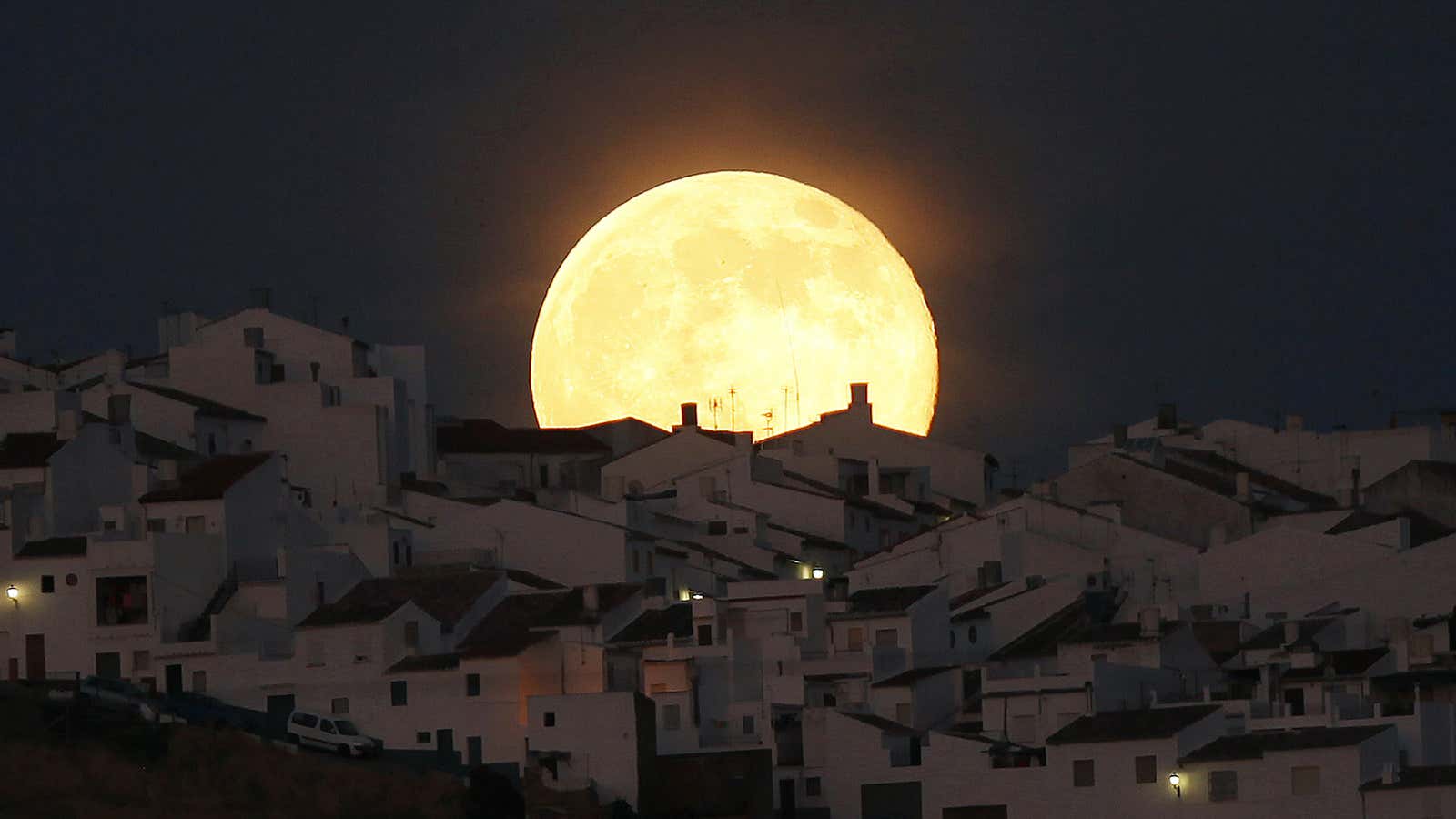A supermoon is breathtaking. The vision of the moon at the fullest part of its cycle, at its closest point to Earth, filling the sky, is mesmerizing. And for some people who encounter the attention-grabbing sight at the wrong time, it is also a stone cold killer.
In a recent paper published in the British Medical Journal, a pair of researchers from the University of Toronto and Princeton University, pored over data from the US National Highway Traffic Safety Administration on motorcycle fatalities in the US from 1975 to 2014. They looked at data from the 494 full-moon nights that occurred during that 40-year period, plus, as a control, the 988 nights exactly one week before and after each full moon.
There were 13,029 motorcycle fatalities on those 1,482 nights. On a typical night with no full moon, there were 8.64 fatal crashes. But on full-moon nights, there was an average of 9.1 crashes that resulted in a fatality. When the researchers isolated supermoon nights, the difference was even more striking: there were 10.82 fatal crashes, on average, on nights lit by the light of a supermoon. (When supermoon nights were excluded, “standard” full moon nights had a fatal-crash rate of 8.84.)
A review of motorcycle crash data in the UK, Canada, and Australia saw similar increases in fatalities on full moon nights. (Unlike an eclipse, a supermoon is visible world-wide.) That’s a bit frightening considering we’re in the middle of a supermoon bonanza. The sole supermoon of 2017 was on Dec. 3, but 2018 begins with supermoons on Jan. 1 and Jan. 31. There are, on average, four to six supermoons per year, but fluctuations in the moon’s cycle mean that the total number can vary widely in a given year.
The same qualities that make a supermoon so spectacular to behold are the ones that can render it lethal. There are two broad categories of human attention: We give goal-directed attention to the things on which we’re consciously choosing to focus, such as the road when you’re driving. Stimulus-driven attention is the reflex-quick response we give to distractions, like the flash of light of a new text message on your mobile phone that briefly draws your eyes from the road.
Something is most likely to grab our attention if it is big, bright, or sudden. A supermoon—particularly one encountered on a dark and curving road, that seems to pop out of nowhere—is all three of those things. The 5% increase in fatalities is significant in safety terms—statistically, a full moon (even a non-super one) raises the risk of fatal crashes more than does many common hazards, like sand or gravel on the road for example, said Donald Redelmeier, a professor at the University of Toronto and the study’s co-author.
Ultimately, though, a full moon, and even a supermoon, is no match for, say, a mobile phone when it comes to distracting drivers. The researchers chose it because it was an easy distraction to study: the presence of a full moon at the time of a crash can be empirically verified, but people aren’t always honest about whether they were looking at their phones, or accurate in their memory of the thing that caught their eye on the roadside. The truth, though, is that the biggest threat to motorists is likely sitting in their car right next to them.
